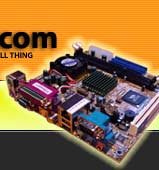|  | September 05, 2017
Choosing the right DC-DC PSU August 27, 2015
AMD's Project Quantum August 13, 2015
The Redstone PC is the ultimate Mini-ITX Minecraft Machine October 09, 2014
The "Restomod TV" April 09, 2013
Installing NAS4Free February 28, 2013
Building an XBMC 12 Home Theatre PC January 25, 2011
XBMC Guide updated to version 10.0 August 06, 2010
Building a Green PC February 15, 2010
Building an ION powered HTPC with XBMC October 10, 2008
The "Cambridge Autonomous Underwater Vehicle 2008" |
|  | | | September 12, 2008
"Florian", the DVD burning robot September 05, 2008
The "i-EPIA" May 22, 2008
The "GTA-PC" April 14, 2007
The "Digg" Case January 19, 2007
The "ITX-Laptop" December 07, 2006
The "Tortoise Beetle" October 02, 2006
The "DOS Head Unit" August 31, 2006
The "Janus Project" August 05, 2006
The "Leela PC" June 26, 2006
Nano-ITX in a Football May 17, 2006
The "EPIA Alloy Mod" April 11, 2006
Neatorama's Collection of Case Mods February 18, 2006
The "Rundfunker" October 24, 2005
The "ITX TV" October 06, 2005
The K'nex-ITX August 05, 2005
The "Waffle Iron PC" July 21, 2005
The "Supra-Server" July 18, 2005
The "Mega-ITX" July 07, 2005
The "Encyclomedia" May 25, 2005
The "Accordion ITX" |
|  | | | May 16, 2005
The "FileServerRouterSwitch" May 15, 2005
The "Mini Falcon" May 13, 2005
The "Bender PC" May 11, 2005
The "BBC ITX B" May 10, 2005
The "Frame" April 20, 2005
The "Jeannie" March 09, 2005
The "Cool Cube" January 30, 2005
First Nano-ITX Project? January 17, 2005
The "iGrill" January 15, 2005
The "Gumball PC" December 15, 2004
The "Deco Box" December 03, 2004
The "TERA-ITX" October 06, 2004
The "Coealacanth-PC" September 17, 2004
The "Gramaphone-ITX-HD" August 26, 2004
The "C1541 Disk Drive ITX" August 25, 2004
The "SEGA-ITX" August 13, 2004
The "Quiet Cubid" August 06, 2004
The "BMWPC" July 14, 2004
The "Moo Cow Moo" July 02, 2004
The "Mini Mesh Box" Full alphabetical archive on right hand side of page... |
|
|
VIA EPIA N10000 Nano-ITX Review
Temperature, Noise Levels and
Power Consumption
These are the big 3 problems that EPIA boards tackle so well, and the entire computer industry is waking up to. Each works in mutual symbiosis with the other. If a component draws a lot of power, it will need to dissipate any wasted energy as heat, therefore getting hotter and requiring cooling, first with a heatsink and then with a spinning fan - creating noise, and drawing more power.
VIA try to produce low power components that create little heat, and therefore require passive (fanless) cooling. Intel turned around their entire product line to concentrate on fast, but low power consumption processors. AMD have known this for years, but certainly weren't going to tell Intel about it. We live in interesting times.
Temperature
We used a laser thermometer accurate to 1°C to measure the heatsink temperature of the EPIA N under load, on the surface of the heatsink, and pointing directly underneath the cooling fan. Then we disconnected the fan and tried again.
Results were extremely encouraging. The heatsink remained at room temperature throughout the first test (around 25°C), and gradually heated up slightly to around 35°C with the fan so recklessly disconnected. At idle with the fan spinning the heatsink was cold to the touch. Core surface temperatures as you would expect were higher, by around another 10°C on average (and depending exactly where you pointed the laser).
Sound Levels
The fan itself was also extremely quiet. Perhaps in an enclosure allowing for vibration there would be a subtle noise, but to all intents and purposes it was virtually silent. VIA measure this at 20dBA, which is about the same as whispering at 1m. Or a kitten kissing a butterfly's wings. Probably.
Of course this could change - small fans often get noisier over time, particularly if they suck in some dust. But for now we're impressed.
Power Consumption
While we did this we also measured power consumption using a plug-through Wattmeter (i.e. a household energy meter). We had a slimline optical drive and 2.5in HDD connected through a 120W 12V DC converter, powered by a 60W AC Adapter. We would expect the drives to consume about 5W each, and there to be perhaps 5-10% wastage at the PSU.
Our measured power consumption was between 25W at idle and 30W under load for the whole system. Subtracting the components, this works out at under 20W for the board, even under load. A similar Mini-ITX board draws about 10-15W more than this whilst performing the same tasks, so this is an impressive cut in power consumption.
Benchmarks (1) - Sisoft Sandra-->
*Advert* Find your perfect board the Mini-ITX store! *Advert*
Our board finder will help you decide at the Mini-ITX.com Online Store. We serve the UK, Europe, USA and beyond. Order in-stock components before 7.00PM GMT and we'll ship same day! |
|
|
|







